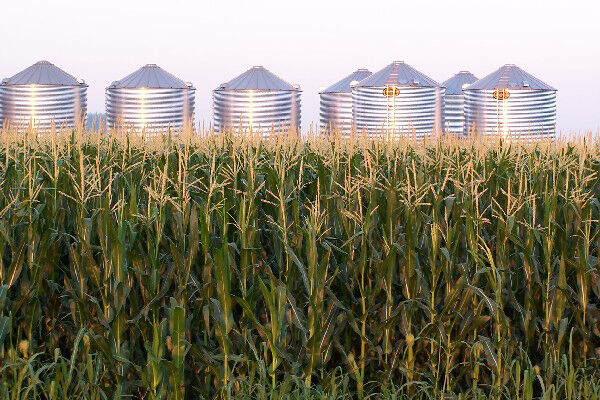Grain producers saw near-record prices earlier in the year and many ask if those levels will return soon. The answer, as many producers and analysts know, is unknown.
During a recent Winning the Game grain marketing webinar, Kansas State University Extension Agricultural Economist Dan O’Brien and Kansas Farm Bureau Director of Commodities Mark Nelson spoke about the challenges farmers face and the potential pricing opportunities that remain in the final five months of year.
O’Brien said prices have come down as investors reduced their stakes in markets, as reflected by indicators like the stock market. Still, the ongoing drought and heat in prime production regions in the High Plains remains important to analysts and farmers. In mid- to late-July with temperatures running 10 degrees Fahrenheit above normal it has stressed corn and soybean fields.
“We have curbs on these markets,” he said.
He said the latest U.S. Department of Agriculture’s World Ag Supplies and Demand Estimates report projects a corn harvest at 177 bushels an acre, which was the same as a year ago when growing conditions were better in the western Corn Belt. The September WASDE report may provide a clearer picture of corn production.
The drought in Kansas is a tale of two maps, he said. Western Kansas is really dry while many parts of eastern Kansas have received adequate moisture. The story is similar in other prime growing regions.
Plus, Argentina and Brazil have been dry, too.
Nelson noted that the drought is not just in North and South America but also on the European continent, which is of importance to global wheat production as producers consider their 2023 market plan.
As the Federal Reserve looks to tamp inflation it has meant higher interest rates. As the dollar strengthens against other currencies, a stronger dollar hurts exports because they cost more for the importing country, O’Brien said. “A strong dollar is a headwind for exports.”
Nelson said in all matters timeless advice includes keep it simple, focus on what a producer can control, monitor the weather and how it may or may not impact expected production, and work closely with his lender and broker or marketing consultant.
Nelson said pricing opportunities have been the story of 2022 as producers could use a strategy that rolled upward most of the first half of the year and even with higher expenses they could stay ahead.
Nelson said there are several hedge, forward contract, and option tools available as they look to market their crop the rest of 2022 and into 2023. He said historical data from basis, which is the difference between cash and CME Group prices, production costs, and yields over a three- or five-year period are good benchmarks to follow.
Ukraine question mark
When Russia invaded Ukraine in late February it sent U.S. commodity cash and futures prices soaring by early March and analysts focused on the current marketing year. Since hitting peaks less than two months ago when wheat, corn, soybeans, and sorghum were at $11 a bushel, $8.56 a bushel, $16.09 a bushel, and $7.56 a bushel, respectively, as reported June 14 by Pride Ag Resources in Dodge City, Kansas, as of July 19 the prices for those commodities were now $8.23 a bushel for wheat, $7.77 a bushel for corn, $14.29 a bushel for soybeans and $6.07 a bushel for sorghum.
Antonina Broyaka, an Extension associate of K-State’s Agricultural Economics Department, said as of June 22 Ukraine was projected to have indirect crop losses of $9.6 billion as a result of the invasion. The indirect losses in agriculture due to production decrease, logistics disruption, and lower prices for export-oriented commodities are estimated at $23.3 billion, according to the Kyiv School of Economics, she said.
Broyaka gave an update on Ukraine’s agricultural industry on July 19.
Losses were projected of $2.43 billion for sunflowers, $2 billion for wheat, $1.2 billion for corn and $564 million for barley. The Ukraine is No. 1 in sunflower oil exports, No. 3 in corn exports (the U.S. is No. 1) and No. 6 in wheat exports (Russia is No. 1, Canada is No. 2, and the U.S. is No. 3).
She said besides the production challenges of being in a war-torn country, the agricultural industry has been hamstrung by transpiration logistics including Russian blockades at the Black Sea ports, which has kept grain from Ukraine’s export destinations. One bright spot is that by rail Ukraine has been able to ship out grain cargoes to the western border crossings that reaches Europe.
Also agricultural losses of $859 million were attributed to higher production costs for fertilizer and fuel.
Wheat harvest in Ukraine typically starts about a month later than it does in the wheat belt of Kansas. The war has interrupted production and it will take time to restore the damaged fields so they can reach pre-invasion levels, she said.
Dave Bergmeier can be reached at 620-227-1822 or [email protected].




